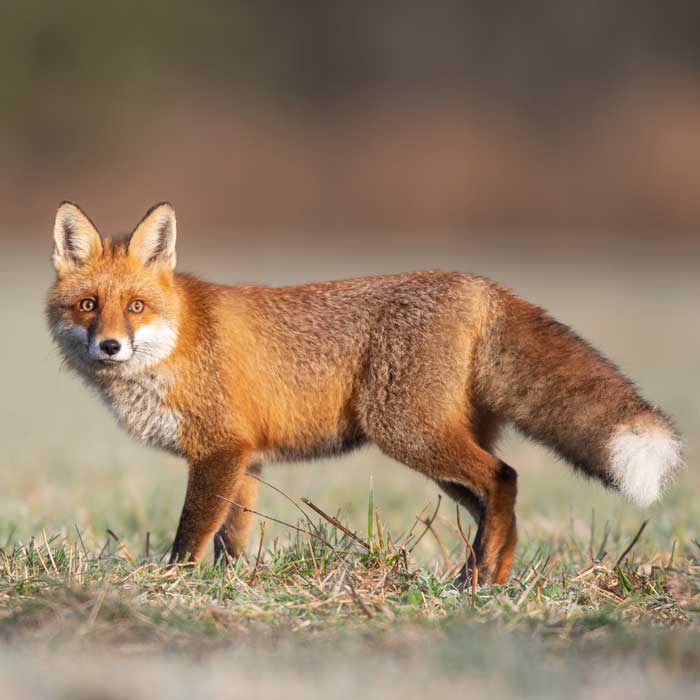
Fox
The fox, a common and adaptable wild animal, plays an important role in the ecosystem as both predator and prey. This fact sheet provides a detailed overview of the fox's biology and ecology and highlights the importance of protecting its habitats and living peacefully with humans.
Fox Products
-
Animal display fox
1 reviewRegular price From 69,90€Regular priceUnit price / per -
Starter set - "Black Forest"
7 reviewsRegular price From 399,90€Regular priceUnit price / per -
Life-size deer foot stamp
No reviewsRegular price 18,90€Regular priceUnit price / per -
Life-size deer foot stamp
1 reviewRegular price 159,90€Regular priceUnit price / per -
Animal stand fox - outdoor set
No reviewsRegular price 85,50€Regular priceUnit price / per -
Pop-Up Wall "Forest Habitat"
No reviewsRegular price 300,00€Regular priceUnit price / per -
Pop-Up Wall "Forest Habitat"
No reviewsRegular price From 1.200,00€Regular priceUnit price / per -
Pop-Up Wall "Forest Habitat"
No reviewsRegular price From 1.200,00€Regular priceUnit price / per -
Wildlife Sticker Set
No reviewsRegular price From 9,90€Regular priceUnit price / per
Profile: Fox
-
Scientific classification
- Class: Mammalia (mammals)
- Order: Carnivora (predators)
- Family: Canidae (dogs)
- Genus: Vulpes
- Species: V. vulpes (red fox)
-
Physical characteristics
- Size: Body length of 45-90 cm
- Shoulder height: 35-50 cm
- Weight: 3-14 kg, depending on gender and region
- Special features: Slender build with bushy tail, pointed snout and large ears; fur in various shades of red and brown, often with a white chest and belly.
-
Habitat and distribution
- Common regions: Europe, Asia, North America, North Africa
- Habitat: Diverse, from forests to fields and meadows to urban areas; adaptable and often found near human settlements.
-
Nutrition
- Diet: Omnivorous with a predominance of meat
- Typical food: small mammals, birds, insects, fruits, berries, carrion, occasionally human waste.
-
Reproduction and lifestyle
- Mating season: winter to spring
- Gestation period: Approx. 52 days
- Litter size: 3-6 young per litter
- Brood care: Females raise the young alone
- Social structure: Mostly solitary, outside of the mating season.
-
Lifespan and protection status
- Life expectancy: Up to 8 years in the wild
- Endangered status: Not threatened, but hunting, traffic accidents and habitat loss can affect local populations.
- Conservation measures: protection and preservation of habitats, regulation of hunting, promotion of peaceful coexistence with humans.








